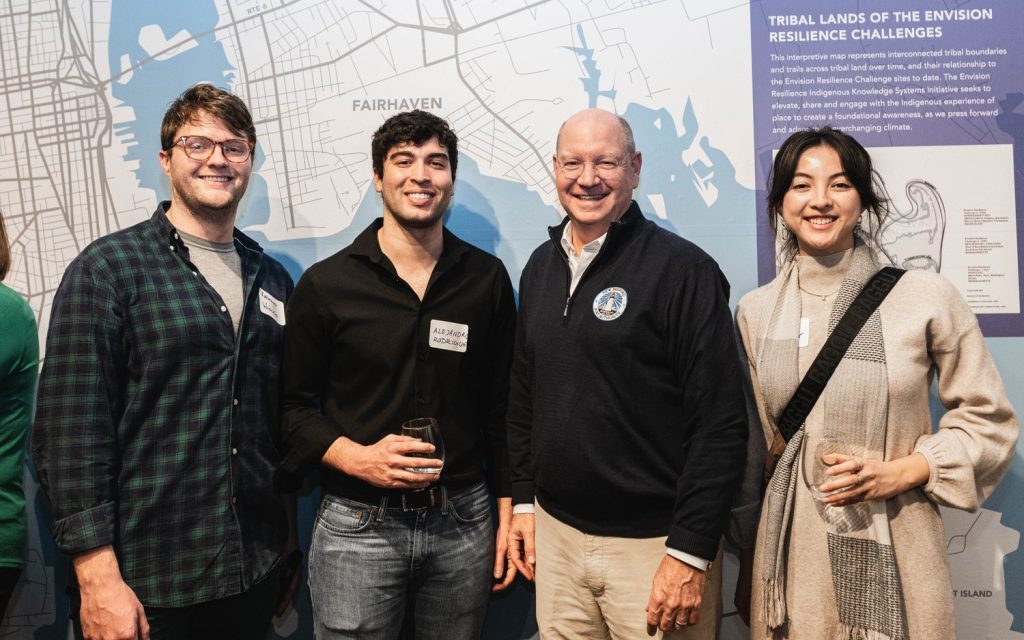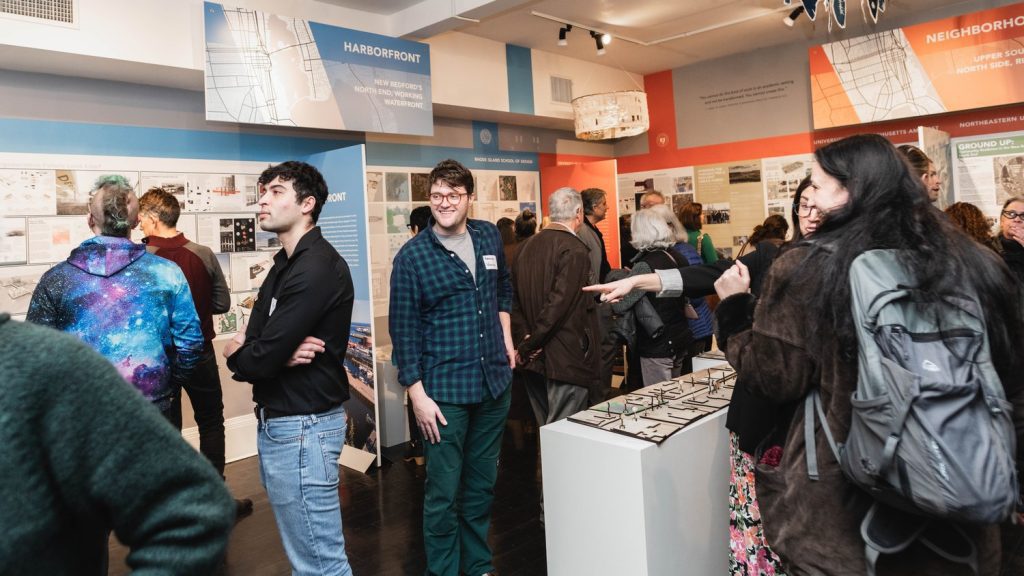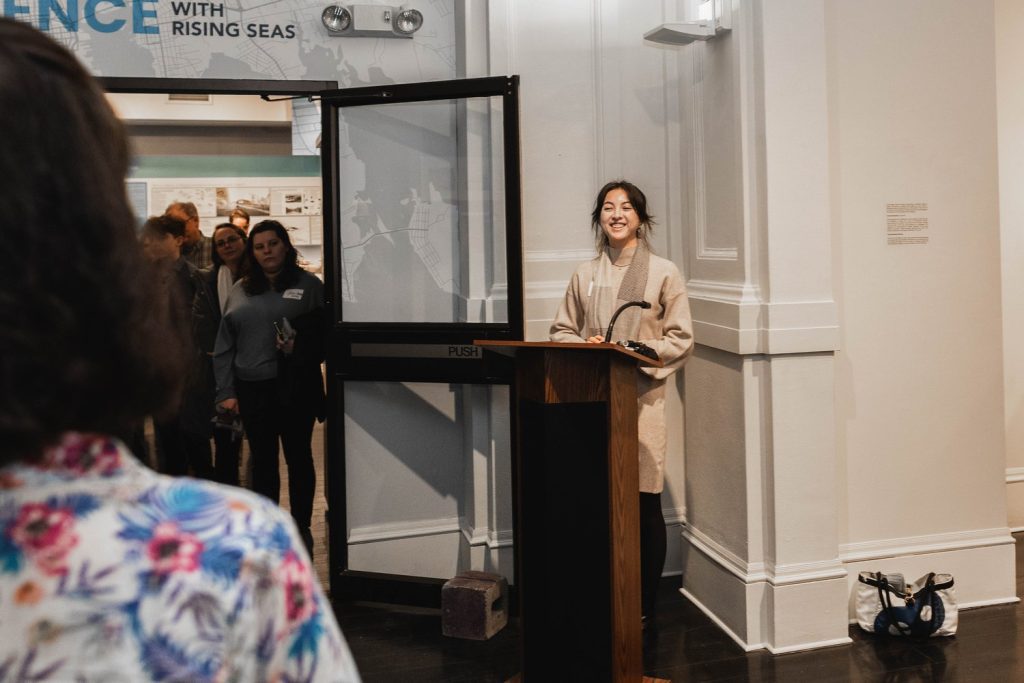
Monday, February 26, 2024
By: Tatiana Rodriguez
Three University of Florida students had the opportunity to travel to New Bedford, Massachusetts to attend the Envision Resilience Challenge exhibition. Marla Stephens, Alejandro Rodriguez and Raymond Wincko are in the Master of Architecture program and were among the students from seven universities whose work was highlighted at the exhibition.
The Envision Resilience Challenge is a coastal resilience initiative that connects community members with academia and local leadership. Students are tasked with envisioning innovative approaches to the impacts of climate change and designing for a future that will struggle with rising seas and flooding. This year, the focus of the challenge was how infrastructure, shorelines and neighborhoods in New Bedford and Fair Haven might adapt to ongoing climate change.
“UF’s involvement in this competition is important because our students produce bold and thought-provoking design research. The work that the studio did in New Bedford to help the community envision its future related to offshore wind power challenged the city to think about its future in new ways,” Jeff Carney, the professor leading the challenge, said.

“I think it is also important for people from different regions of the U.S. and the world to learn from each other. Coming from Florida, our students might not be as familiar with the Northeast, but they bring great related experience and a valuable perspective.”
“This challenge gave us an opportunity to talk about a larger idea and show that architecture is a vehicle for experimentation and innovation,” Rodriguez said.
Stephens’ design idea focused on rising seas and how to manipulate the ground in the area so that it is more receptive to water coming in, rather than putting up harsh barriers and sea walls that will not protect the area in the future. Rodriguez’s idea highlighted a disconnect between the heavy industrial activity of the area and the public activity. His project aimed to foster a deeper connection between people and the water and reclaim part of the waterfront for the city. Wincko took a more educational route, and his project focused on how the citizens of New Bedford can, at a smaller scale, use wind and solar technology in their own homes to mitigate their reliance on larger corporations.
“I really enjoyed seeing the people who weren’t involved in the process and who were just interested civilians who took the time to learn and understand the context and the drastic solutions that young minds are considering for their problems,” Wincko said.
They have been working on this project since August 2023, but visited New Bedford and Fair Haven in September to get a more thorough understanding of the context and situation so that they could properly respond to it.
“My favorite part of the exhibition was getting to see all of the work come together and see the people who are actually involved and engaged with these issues,” Stephens said. “It was also great to see all the different takes on the problem, from people who live there to people like us who are from Florida and who had to address the problems and design solutions not in the context of the area.”
“It’s important to promote the sharing of ideas that might blossom into real solutions,” Rodriguez said about the importance of the challenge. “It’s tough to solve this as individuals, but collectively, with years of students and schools involved, I think that there’s real potential for innovation to come out of it.”
The exhibition is on display at the New Bedford Art Museum through March 23.
